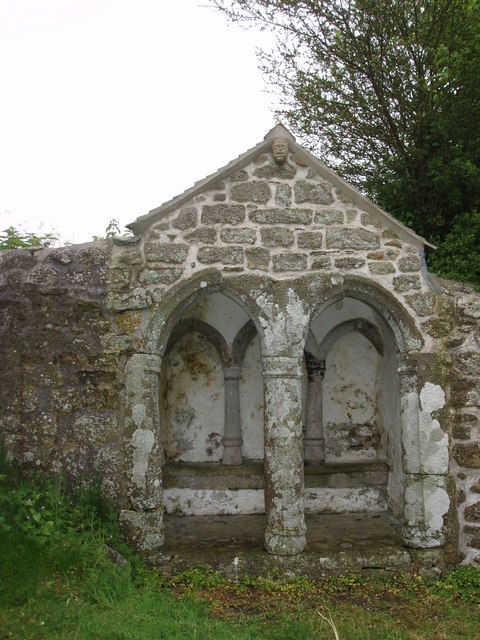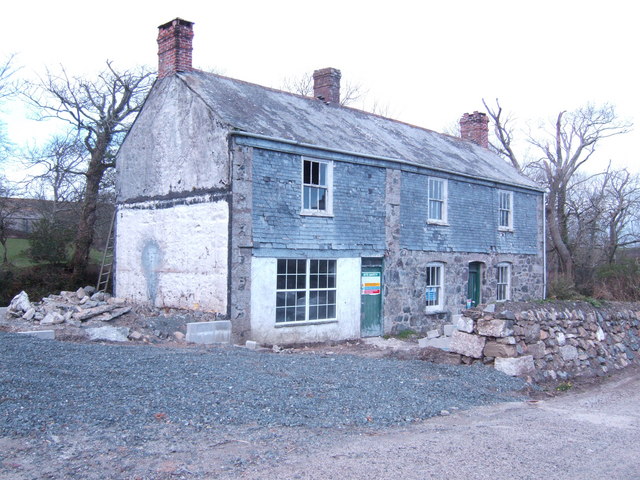|
St. Keverne
St Keverne ( kw, Pluw Aghevran (parish), Lannaghevran (village)) is a civil parish and village on The Lizard in Cornwall, England, United Kingdom. In addition to the parish, an electoral ward exists called ''St Keverne and Meneage''. This stretches to the western Lizard coast at Gunwalloe. The population of the ward at the 2011 election was 5,220. The Cornish rebellion of 1497 started in St Keverne. The leader of the rebellion Michael An Gof ("the smith" in Cornish) was a blacksmith from St Keverne and is commemorated by a statue in the village. Before his execution, An Gof said that he should have "a name perpetual and a fame permanent and immortal". In 1997 a 500th anniversary march, "Keskerdh Kernow 500", celebrating the rebellion, retraced the route of the original march from St Keverne, via Guildford to London. Geography The parish is a large one. It includes some 10 miles of coast from Nare Point at the mouth of the Helford River to Kennack Sands, and the Manacles o ... [...More Info...] [...Related Items...] OR: [Wikipedia] [Google] [Baidu] |
United Kingdom Census 2011
A Census in the United Kingdom, census of the population of the United Kingdom is taken every ten years. The 2011 census was held in all countries of the UK on 27 March 2011. It was the first UK census which could be completed online via the Internet. The Office for National Statistics (ONS) is responsible for the census in England and Wales, the General Register Office for Scotland (GROS) is responsible for the census in Scotland, and the Northern Ireland Statistics and Research Agency (NISRA) is responsible for the census in Northern Ireland. The Office for National Statistics is the executive office of the UK Statistics Authority, a non-ministerial department formed in 2008 and which reports directly to Parliament. ONS is the UK Government's single largest statistical producer of independent statistics on the UK's economy and society, used to assist the planning and allocation of resources, policy-making and decision-making. ONS designs, manages and runs the census in England an ... [...More Info...] [...Related Items...] OR: [Wikipedia] [Google] [Baidu] |
The Manacles
The Manacles ( kw, Meyn Eglos, meaning ''church stones'') () are a set of treacherous rocks off The Lizard peninsula in Cornwall. The rocks are rich in marine wildlife and they are a popular spot for diving due to the many shipwrecks. Traditionally pronounced ''mean-a'klz'' (1808), the name derives from the Cornish ''meyn eglos'' (church stones), the top of St Keverne church spire being visible from the area. Geography The rocks are in Falmouth Bay and extends about 1 nautical mile east and south-east of Manacle Point, on the east coast of the Lizard Peninsula. The nearest village is Porthoustock. The reef consists of many submerged rocks and several groups of rocks that break the surface, although some only do so at low water. The Middle Manacles in the north consist of Maen Chynoweth or Morah ( kw, Morhogh, meaning ''dolphin''), Chyronos, Maen Gerrick and the Gwinges, the eastern group has Vase Rock and Pen Vin, the large group in the centre include the Minstrel Rock, Carn-dhu ... [...More Info...] [...Related Items...] OR: [Wikipedia] [Google] [Baidu] |
Carronade
A carronade is a short, smoothbore, cast-iron cannon which was used by the Royal Navy. It was first produced by the Carron Company, an ironworks in Falkirk, Scotland, and was used from the mid-18th century to the mid-19th century. Its main function was to serve as a powerful, short-range, anti-ship and anti-crew weapon. The technology behind the carronade was greater dimensional precision, with the shot fitting more closely in the barrel thus transmitting more of the propellant charge's energy to the projectile, allowing a lighter gun using less gunpowder to be effective. Carronades were initially found to be very successful, but they eventually disappeared as naval artillery advanced, with the introduction of rifling and consequent change in the shape of the projectile, exploding shells replacing solid shot, and naval engagements being fought at longer ranges. History The carronade was designed as a short-range naval weapon with a low muzzle velocity for merchant ships, b ... [...More Info...] [...Related Items...] OR: [Wikipedia] [Google] [Baidu] |
Gilbert Hunter Doble
Gilbert Hunter Doble (26 November 1880 – 15 April 1945) was an Anglican priest and Cornish historian and hagiographer. Early life G. H. Doble was born in Penzance, Cornwall, on 26 November 1880. His father, John Medley Doble, shared his enthusiasm for archaeology and local studies with his sons. He was a scholar of Exeter College, Oxford, and graduated in modern history in 1903. He attended Ely Theological College. Service as an Anglican priest He was ordained in 1907 and served a long series of incumbents, in various parts of England and Cornwall as assistant curate. His Anglo-Catholic leanings were a bar to his preferment in the Church of England. In 1924, when he spoke publicly on "Re-catholicising Cornwall", a proffered appointment was withdrawn. However, in Autumn 1919 he was appointed curate of the parish of Redruth in Cornwall and served there until 1925. He then served for almost twenty years as the Vicar of Wendron, also in Cornwall. In 1935, he was appointed an hon ... [...More Info...] [...Related Items...] OR: [Wikipedia] [Google] [Baidu] |
Germoe
Germoe ( kw, Germogh) is a village and civil parish in Cornwall, England, United Kingdom. Germoe village, the parish's main settlement and church town, is about five miles (8 km) west of Helston and seven miles (11.3 km) east of Penzance. The A394 Penzance to Helston road runs along the southern border of the parish. Other settlements in the parish include Balwest, Boscreege and Tresowes Green. The parish is named after Saint Germocus, one of the companions of Saint Breage. According to legend Germoc was a king in Ireland whose feast day is 6 May. Historically, the largest landowners in the parish were the Godolphin family (the Dukes of Leeds). GENUKI website: Germoe. Retrieved May 2010 Germoe parish is bounded to the north, east and south by [...More Info...] [...Related Items...] OR: [Wikipedia] [Google] [Baidu] |
Middle Ages
In the history of Europe, the Middle Ages or medieval period lasted approximately from the late 5th to the late 15th centuries, similar to the post-classical period of global history. It began with the fall of the Western Roman Empire and transitioned into the Renaissance and the Age of Discovery. The Middle Ages is the middle period of the three traditional divisions of Western history: classical antiquity, the medieval period, and the modern period. The medieval period is itself subdivided into the Early, High, and Late Middle Ages. Population decline, counterurbanisation, the collapse of centralized authority, invasions, and mass migrations of tribes, which had begun in late antiquity, continued into the Early Middle Ages. The large-scale movements of the Migration Period, including various Germanic peoples, formed new kingdoms in what remained of the Western Roman Empire. In the 7th century, North Africa and the Middle East—most recently part of the Eastern Ro ... [...More Info...] [...Related Items...] OR: [Wikipedia] [Google] [Baidu] |
Cornwall Area Of Outstanding Natural Beauty
The Cornwall Area of Outstanding Natural Beauty covers in Cornwall, England, UK; that is, about 27% of the total area of the county. It comprises 12 separate areas, designated under the National Parks and Access to the Countryside Act 1949 for special landscape protection. Of the areas, eleven cover stretches of coastline; the twelfth is Bodmin Moor. The areas are together treated as a single Area of Outstanding Natural Beauty (AONB). Section 85 of the Countryside and Rights of Way Act 2000 places a duty on all relevant authorities when discharging any function affecting land within an AONB to have regard to the purpose of conserving and enhancing natural beauty. Section 89 places a statutory duty on Local Planning Authorities with an AONB within their administrative area to produce a 5-year management plan. Designation The areas were designated in 1959, except for the Camel estuary which was added in 1981. [...More Info...] [...Related Items...] OR: [Wikipedia] [Google] [Baidu] |
Goonhilly Downs
Goonhilly Satellite Earth Station is a large radiocommunication site located on Goonhilly Downs near Helston on the Lizard peninsula in Cornwall, England. Owned by Goonhilly Earth Station Ltd under a 999-year lease from BT Group plc, it was at one time the largest satellite earth station in the world, with more than 30 communication antennas and dishes in use. The site also links into undersea cable lines. History Its first dish, Antenna One (dubbed "Arthur"), was built in 1962 to link with Telstar. It was the first open parabolic design and is 25.9 metres (85 feet) in diameter and weighs 1,118 tonnes. After Pleumeur-Bodou Ground Station (Brittany) which received the first live transatlantic television broadcasts from the United States via the Telstar satellite at 0H47 GMT on 11 July 1962, Arthur received his first video in the middle of the same day. It is now a Grade II listed structure and is therefore protected. The site has also played a key role in communications even ... [...More Info...] [...Related Items...] OR: [Wikipedia] [Google] [Baidu] |
Traboe
Traboe (pronounced ''tray-bow'') ( kw, Treworabo) is a hamlet on the Lizard Peninsula, Cornwall, England, United Kingdom. Traboe is about 5 km west of St Keverne; nearby is Traboe Cross, a junction on the B3293 road. It is approximately a mile down the road from Goonhilly Satellite Earth Station. It contains eleven houses and a building which used to house Rosuick Farm Shop, this being the purpose for which it was built. The list of houses includes a converted inn and a converted school house. There is a well situated at the back of the green. A tree was planted on the green by residents of the hamlet to commemorate the millennium. Traboe lies within the Cornwall Area of Outstanding Natural Beauty The Cornwall Area of Outstanding Natural Beauty covers in Cornwall, England, UK; that is, about 27% of the total area of the county. It comprises 12 separate areas, designated under the National Parks and Access to the Countryside Act 1949 for ... (AONB). The name ''Traboe' ... [...More Info...] [...Related Items...] OR: [Wikipedia] [Google] [Baidu] |
Laddenvean
Laddenvean ( kw, Ladnvian) is a small settlement in southwest Cornwall, England, United Kingdom. It lies immediately north of, and adjoins, St Keverne village south of Falmouth. The name ''Laddenvean'' comes from the Cornish language Cornish (Standard Written Form: or ) , is a Southwestern Brittonic language, Southwestern Brittonic language of the Celtic language family. It is a List of revived languages, revived language, having become Extinct language, extinct as a livin ... ''Ladnvian'', which contains the elements ''ladn'' 'enclosure' and ''vian'' 'little'. References Villages in Cornwall St Keverne {{Cornwall-geo-stub ... [...More Info...] [...Related Items...] OR: [Wikipedia] [Google] [Baidu] |
Zoar, Cornwall
Zoar ( kw, Zoara) is a hamlet on the Lizard Peninsula in south Cornwall, England, UK. It is situated northwest of the coastal village of Coverack. The name of the hamlet comes from the Zoara Zoara, the biblical Zoar, previously called Bela (), was one of the five "cities of the plain" – a pentapolis at that time of Abram or Abraham named later, it was a highly fertile valley apparently located along the lower Jordan Valley and th ... in the Bible. References Hamlets in Cornwall St Keverne {{Kerrier-geo-stub ... [...More Info...] [...Related Items...] OR: [Wikipedia] [Google] [Baidu] |




